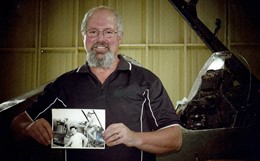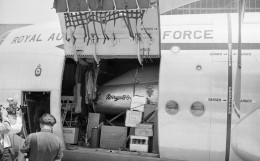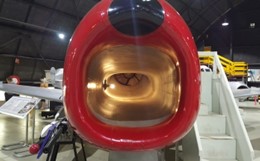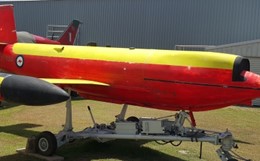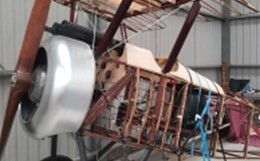FAQ's
What is the difference between Level 1 and Level 1 "Limited"?
NDT Level 1 undertakes work under the supervision of Level 2 or 3 personnel and the results are interpreted by the Level 2. Level 1 "Limited" are approved to undertake specific inspection tasks and interpret the results as documented by the Responsible Level 3.
How can our organisation's NDT staff get sufficient experience when we don't do a lot of routine NDT?
Options may be to position NDT staff in training temporarily with another organisation, or set regular practical training exercises under the guidance of a Level 3. The experience minima must be achieved before approval. CASAs practical OJT component is the same as AS 3669, as clearly defined in the CAO 100.27.
What are the visual acuity requirements?
Good vision is essential for the NDT inspector. Regardless of the vision testing described here and in the standards, it is the responsibility of the NDT inspector to ensure that his/her vision is adequate for the task at the time of inspection. This means that, if a person knows or suspects his/her vision has deteriorated since it was last tested, then he/she should not conduct inspections while in that condition. CASA applies section 6.1.2 of the Australian Standard AS 3669 for the requirements for visual acuity of persons approved to do NDT. For near vision, this requires a person to be able to read Jaeger No.1 size text or equivalent, at a distance of not less than 30 centimetres in at least one eye, natural or corrected; or Times Roman N4.5 or equivalent letters at not less than 30 centimetres with one or both eyes, either corrected or uncorrected. This test is to be done annually by personnel designated by the Responsible Level 3 or by qualified medical personnel. For colour perception, NDT personnel must be capable of distinguishing and differentiating the colours used in the process. Any limitations in colour perception must be evaluated by the Responsible Level 3 to determine its significance to the person's work, and this must be documented.
How do I apply for, or renew an NDT Maintenance Authority?
CAO 100.27 shows the requirements for new or renewal NDT Maintenance authorities. Of course, you may also call your local CASA office or the central telephone number 131757. Also, you can review the check list used by NANDTB approved Level 3.
Download MA AssessmentWho can certify NDT inspections?
CASA Regulation CAR 42ZE states that maintenance on aircraft, including NDT, must be certified by a person either using an approved system of certification, and many maintenance organisations have certification systems approved by CASA; or certify in accordance with the CASA system of certification. The person performing the NDT carries the responsibility for the inspection, and may certify for the conduct of the work and the veracity of the test results. However, the licensed aircraft maintenance engineer makes a final airworthiness certification of the maintenance, which will include due consideration of the results of any NDT. An NDT technician approved by a person holding a CASA 42ZC (7) Instrument of Delegation, may certify for an NDT inspection, provided the inspection is within the scope of the approved person, and is done on behalf of the CAR 30 organisation which holds the Instrument. This situation is where an employer is authorised by CASA to approve its own NDT staff. A person holding a valid Airworthiness Authority for NDT issued under part 33B of the Regulations may certify for an NDT inspection, provided the inspection is within the scope of the Authority, and he/she is working under an agreement with a CAR30 maintenance organisation. A CASR Part 145 Approved Maintenance Organistation may authorise those employees to perform and certify for NDT who satisfy the authorisation requirements shown in the organisation's Exposition.
Who can approve NDT data (Approved DATA)?
Approved NDT data can come from several sources; the Type Certificate holder (or Supplementary Type Certificate holder), also known as the Original Equipment Manufacturer (OEM), is the prime source of approved NDT data. Additionally, CASA may provide NDT instructions approved under their authority as the Airworthiness Regulator. For NDT inspection instructions which are developed by maintenance organisations or operators, these may be approved by the organisation if they have appropriately authorised engineers, such as CAR 2A or CAR 35. Alternatively NDT inspection instructions may be drafted by a NDT Technician and forwarded to CASA for CAR 2A (4) approval with or without a Level 3 or CAR 35 Engineers input. However, a CAR 2A (4) delegate within CASA is a tertiary qualified engineer. A CASR Part 145 AMO may under certain conditions develop NDT data which must be approved for use by the CASR Part 42 CAMO responsible for the airworthiness management of the aircraft. For more clarity and order of precedence for NDT approved data refer to the CASA AWB 02-060 Issue 1 – 18 September 2017
Download | AWB 02-060 Issue 1 - NDT data - The use of during the course of maintenance.pdfHow do I resolve inconsistencies with NDT data?
The responsibility for the provision of NDT data to the NDT technician and the accuracy of that data rests with the maintenance organisation in CAR 30 and the Part 42 CAMO in Part 145. If there are any inconsistencies, errors or ambiguities in NDT data it should be referred to the engineering representative of the maintenance organisation. Reference to AWB 02-060 Issue 1 – 18 September 2017 and CAR 50E may resolve the inconsistency. If not, you may have to consult a CAR 35 delegate or Level 3 for clarification.
Download | AWB 02-060 Issue1- NDT Data - The use of during the course of maintenance.pdfIs CAO 108.8 and 108.10 approved data for penetrant and magnetic particle inspections?
CASA is preparing more up to date documents to replace these CAOs. The two CAOs are only used if the OEM data doesn't specify a standard, and even then their use must be approved by either a CAR 35 delegate or a NDT Level 3.
Does my organisation have to comply with AS3669?
If your organisation conducts NDT on aircraft, engines or components, the NDT staff, whether they be employed or contract staff, must meet minimum requirements set by CASA The requirements for CASA NDT Authorities reflect Level 2 of AS-3669, as do the renewal requirements.CAO 100.27 states the requirements for new or renewal NDT Maintenance Authorities. If your organisation is a Part 145 AMO and conducting NDT its Exposition document will state the standard for NDT qualifications. This will be the standard to be followed.
Does my organisation need a Level 3?
At this time CASA does not mandate that organisations engage a Level 3. However, there are some processes which will from time to time require input by a NDT Level 3, which may be contracted.
Does the Level 3 have to approve other levels of NDT staff?
AS 3669 is an employer based approval standard. Only the employer approves NDT staff. The Level 3 has a role in assessing and prescribing NDT training, and assessment of NDT personnel. The Level 3 may recommend but does not approve NDT staff.
What is a NDT written practice?
The written practice is an exposition which outlines how an organisation implements AS 3669 or alternate standard permitted by CASA.
What level of detail is required in my written practice for NDT?
The exposition for NDT or "written practice" need not be a lengthy document. It should contain sufficient detail for non NDT/Quality personnel to follow. It is not to be a blatant rewrite of the standard.
Where can I find the various NDT standards?
For any of the standards which apply to NDT, go to the Standards Australia web site www.standards.org.au . If it is not an Australian standard you are seeking, then use the links from that site to the relevant standards organisation which publishes the standard you require.
Is there any difference between AS3669, NAS-410 and EN4179 and are the mutually recognised?
EN4179 and NAS 410 carry statements that they are technically equivalent to one another, they do not state that they are technically equivalent to AS3669, although AS3669 has a statement that it is technically equivalent to NAS 410 and EN4179. This simply means that neither the EN nor NAS have considered the Australian Standard for equivalence. The 2014 versions of NAS 410 and EN 4179 carry different requirements around the formal training hours required, vision requirements and the re-approval of personnel. They also now recognise Thermography and Sherography as common methods. If your organisation needs to apply either the EN or NAS it should examine the standards carefully and seek interlpretation assistance from a suitable Level 3. In the application of these standards, it will be the various Airworthiness Regulators, or National Airworthiness NDT Boards which will accept or reject the standards as equivalent. Each of these standards describes an employer based approval system for their NDT staff. Accordingly, any person approved under one standard and moving to an employer who uses another, will need to be assessed by that employer against the employer's NDT approval procedures contained in its written practice. Being approved under one standard does not guarantee approval under the other, but it is a valid starting point for an employer to make a judgement of a person's suitability and competence.
How do I become an Aerospace NDT Level 3


